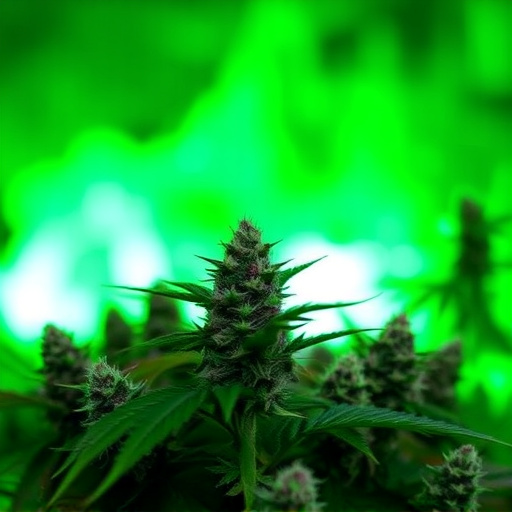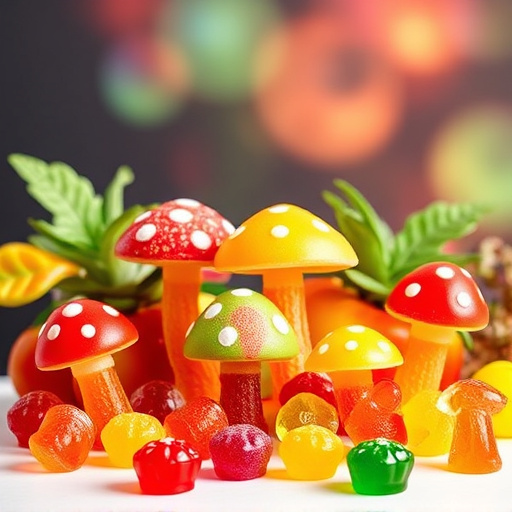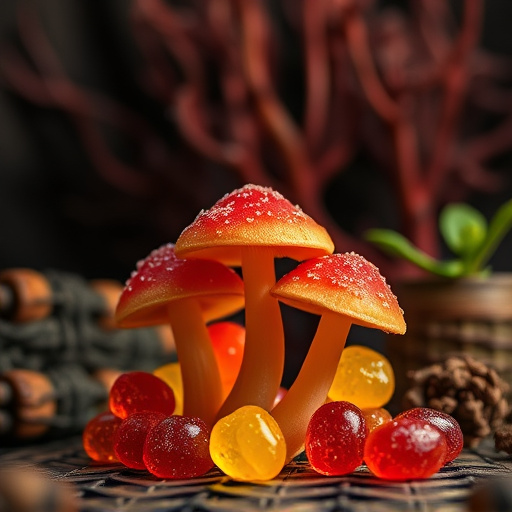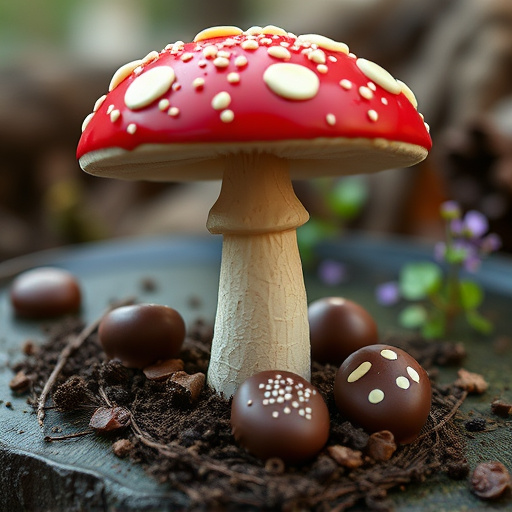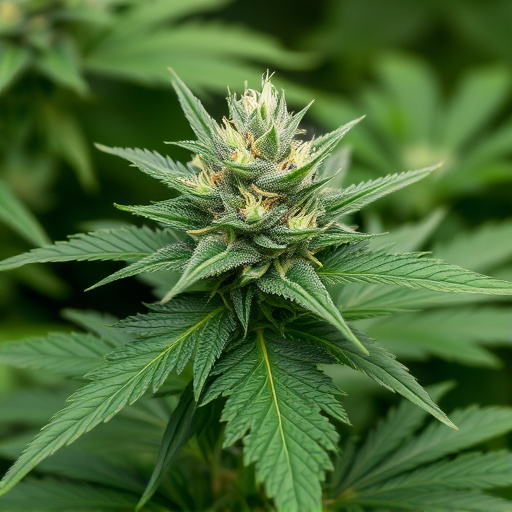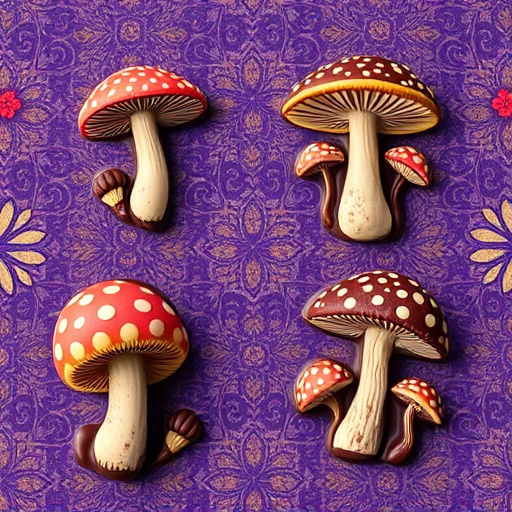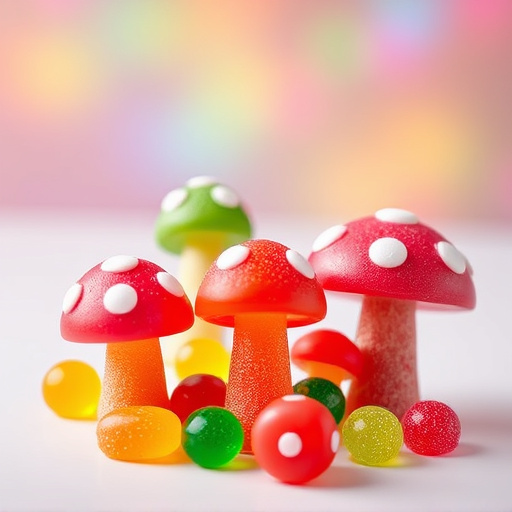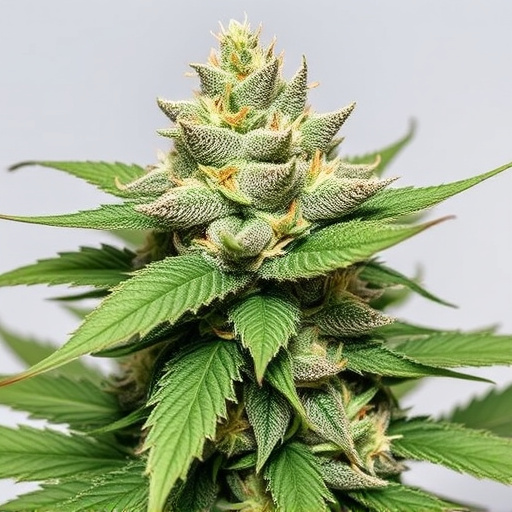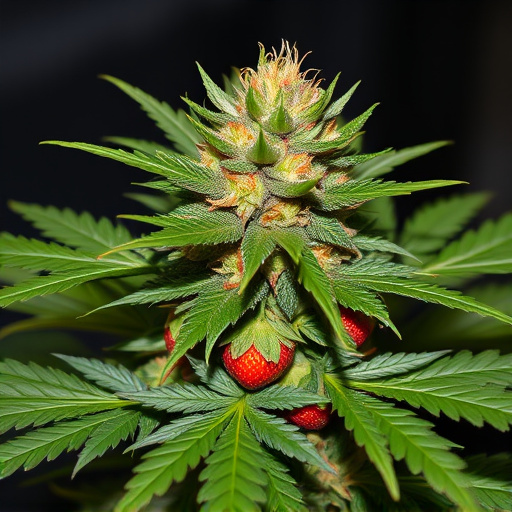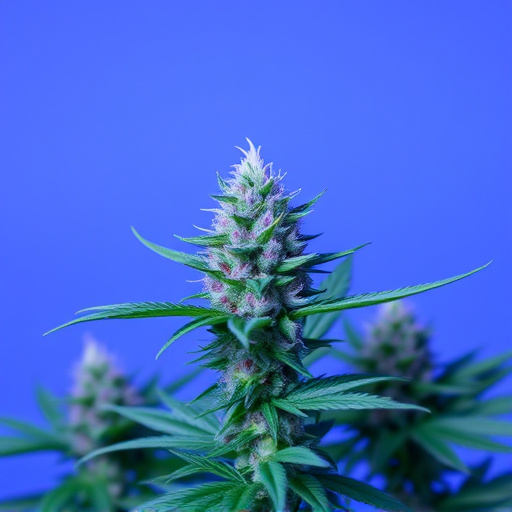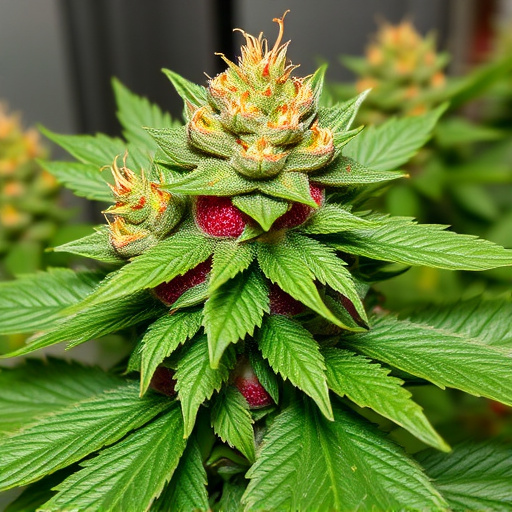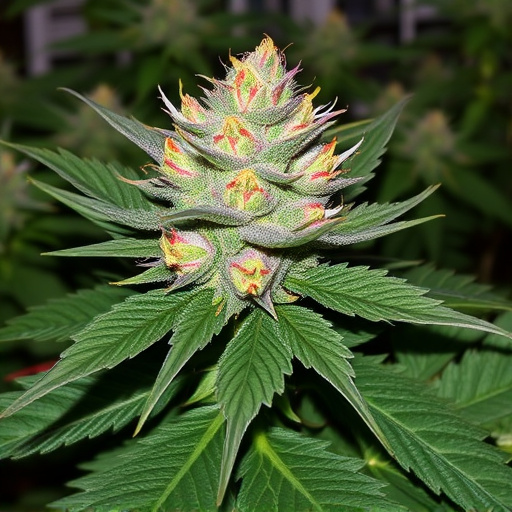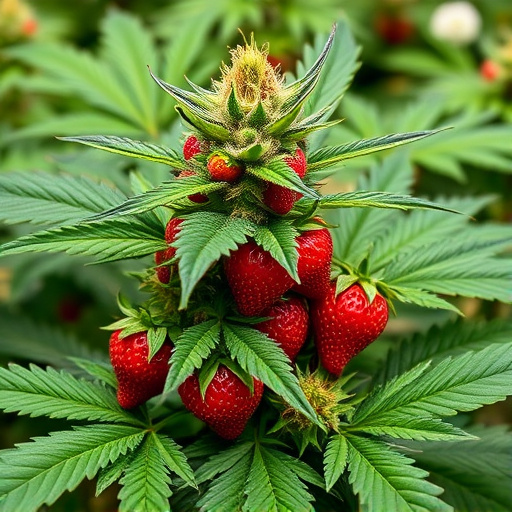Strawberry cannabis strains, known for their fruity scent and moderate effects, owe their unique properties to specific genetic manipulations and environmental factors. Genetic diversity in cannabis leads to varying chemical compositions, resulting in diverse therapeutic and recreational experiences. Environmental conditions like soil composition, temperature, humidity, cultivation methods, and climate influence the potency and flavor profile of these strains. Individual responses to cannabis vary due to genetics, including CB1 receptor density and metabolic differences, with consumption methods like oral ingestion enhancing specific effects. Understanding these factors is crucial for personalizing and enhancing one's cannabis experience, particularly with strawberry strains high in CBD.
Unraveling the diverse effects of cannabis requires a deep dive into its multifaceted influences. This article explores crucial factors that shape the unique experiences users embark on, from genetic makeup of strawberry cannabis strains to environmental nuances like soil and cultivation techniques. We also delve into individual biology and consumption methods, highlighting how personal adaptations personalize the impact. By understanding these elements, folks can navigate the intricate landscape of cannabis with enhanced insight and awareness.
- Genetics and Strawberry Cannabis Strains: Understanding the Foundation
- Environmental Factors: The Role of Soil, Climate, and Cultivation Techniques
- Individual Biology and Consumption Methods: Personalizing the Experience
Genetics and Strawberry Cannabis Strains: Understanding the Foundation
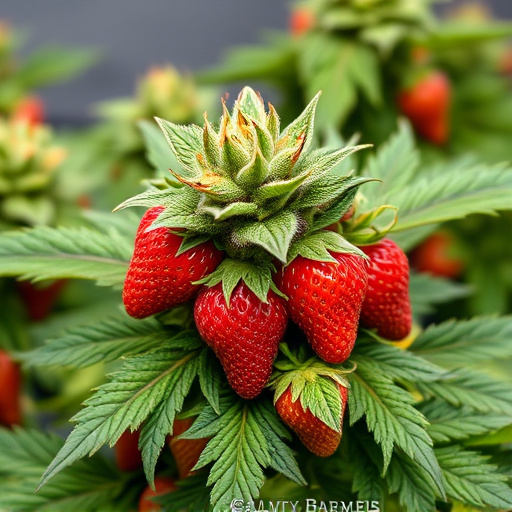
The world of cannabis is a complex landscape, and one aspect that greatly influences its effects is genetics. Strawberry cannabis strains are a prime example of how specific genetic traits can shape the plant’s unique characteristics. These strains, named for their fruity aroma and taste, owe their distinctive properties to precise genetic manipulations. By understanding the genetic foundation, cultivators can craft strains with targeted effects, catering to various user preferences.
Genetic diversity within cannabis allows for a wide range of chemical compositions, leading to varying therapeutic and recreational experiences. Strawberry strains often boast elevated levels of myrcene, a terpene known for its relaxing and sedative properties, contributing to a calming effect. This genetic predisposition towards higher myrcene content is what gives these strains their characteristic strawberry aroma and makes them popular among those seeking relaxation without mental impairment.
Environmental Factors: The Role of Soil, Climate, and Cultivation Techniques
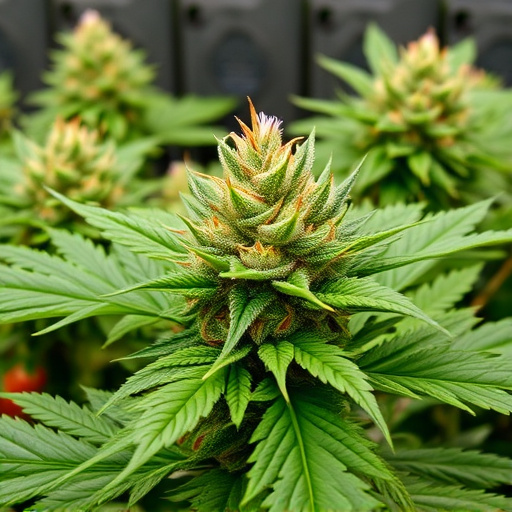
Environmental factors play a significant role in shaping the unique characteristics and effects of cannabis plants, including those behind the popularity of strawberry cannabis strains. Soil composition, temperature, humidity, and cultivation methods all contribute to the final product’s potency and flavor profile. For instance, cannabis grown in rich, well-drained soil with the right pH levels tends to produce more robust and aromatic compounds, which can enhance the sensory experience for consumers.
Climate conditions, such as sunlight exposure and seasonal variations, also impact the plant’s growth and chemical composition. Warmer climates may accelerate flowering, affecting the cannabis plant’s natural processes and resulting in distinct cannabinoid profiles. Cultivation techniques, including training methods and harvest timing, further refine these environmental influences. Skilled cultivators can manipulate these factors to breed and grow specific strawberry cannabis strains known for their delightful fruity aromas and balanced effects.
Individual Biology and Consumption Methods: Personalizing the Experience
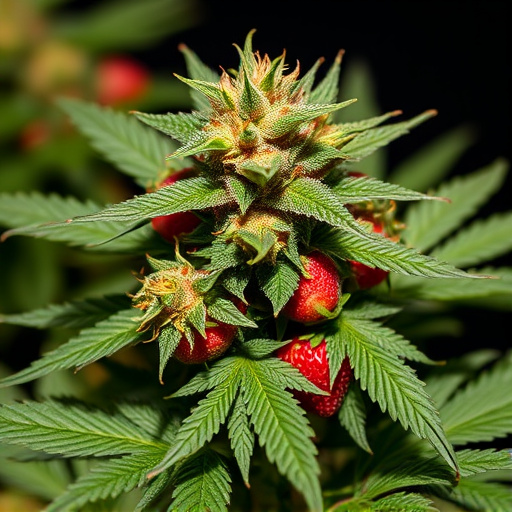
The effects of cannabis can vary greatly from person to person, and a significant factor in this variability is individual biology. Genetic makeup plays a crucial role in determining how one’s body processes cannabinoids like THC and CBD. For instance, some individuals may have a higher density of CB1 receptors in their brain, leading to more intense psychological effects from cannabis consumption. Additionally, metabolic differences can influence the duration and intensity of cannabis’ impact on each individual.
Consumption methods also significantly personalize the cannabis experience. Different administration routes, such as inhalation (smoking or vaping), oral ingestion (edibles), or topical application, result in distinct effects due to varying rates of absorption and cannabinoid delivery to the body’s systems. For example, strawberry cannabis strains known for their high CBD content may produce calmer, more relaxing effects when consumed orally, while smoking them might deliver a quicker but less focused high. Understanding these biological variations and consumption methods is essential for personalizing and optimizing one’s cannabis experience.
In exploring the multifaceted world of cannabis, we’ve uncovered that its effects are a delicate interplay between genetics, environment, and individual biology. Understanding these factors is key to unlocking the unique properties of strawberry cannabis strains, which owe their distinctiveness to specific cultivation practices. By recognizing how soil, climate, and techniques shape the final product, consumers can make informed choices tailored to their preferences and needs. Moreover, considering individual biological variations and consumption methods allows for a personalized experience, ensuring that each user can harness the full potential of this versatile plant.
